Our Story
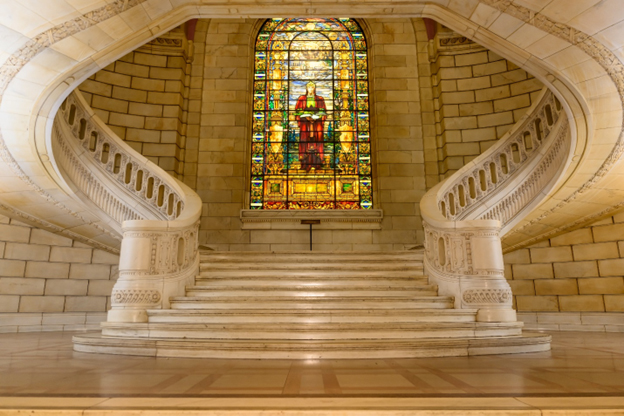 The Eighth District Court of Appeals of Ohio was established by the Ohio General Assembly on March 21, 1887 and is housed in the historic Lakeside Courthouse in downtown Cleveland, Ohio.
After six years of construction, the courthouse was opened to the public in 1912.
When first established, the court was composed of three judges. Today, twelve judges sit on the Eighth District Court of Appeals.
The court holds oral arguments in three courtrooms – two on the first floor of the building and the third, the main courtroom, is located on the second floor.
The Eighth District Court of Appeals of Ohio was established by the Ohio General Assembly on March 21, 1887 and is housed in the historic Lakeside Courthouse in downtown Cleveland, Ohio.
After six years of construction, the courthouse was opened to the public in 1912.
When first established, the court was composed of three judges. Today, twelve judges sit on the Eighth District Court of Appeals.
The court holds oral arguments in three courtrooms – two on the first floor of the building and the third, the main courtroom, is located on the second floor.
Courtroom two on the first floor contains four bronze sculptures depicting scenes featuring the four branches of the United States armed forces at the time of the Civil War. They were the models from which the statuary groupings located on the upper esplanade of the Soldiers’ and Sailors’ Monument on Cleveland’s Public Square were cast.
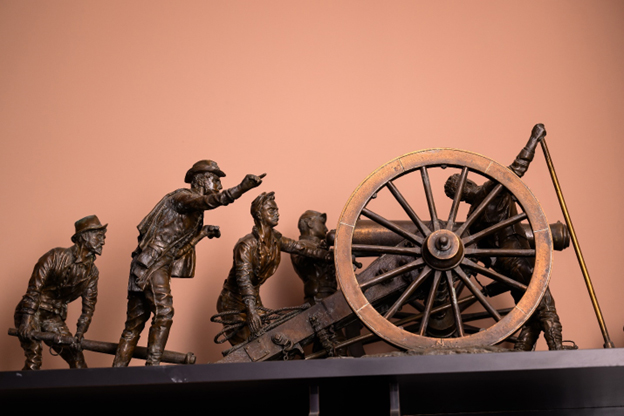

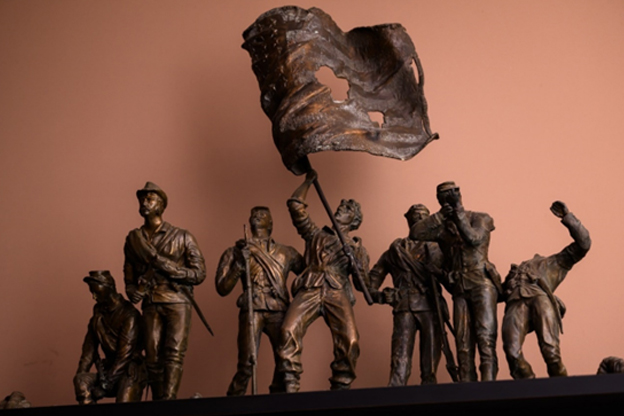
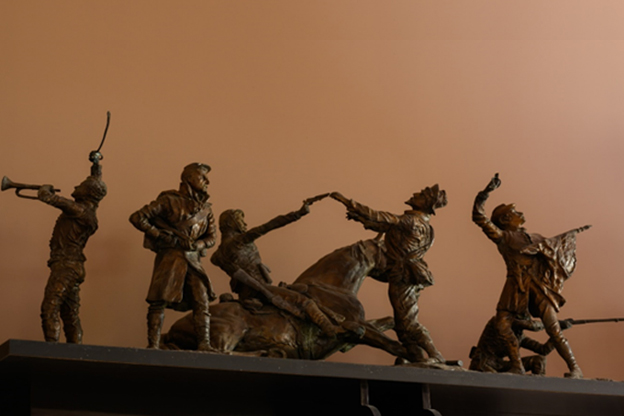
Outside of the main courtroom is an oil on canvas painting titled “King John Signing the Magna Carta at Runnymede” by Sir Frank Brangwyn. Inside of the Eighth District’s main courtroom there are two murals. Over the bench is “The trial of Captain John Smith, 1607” and on the opposite side of the courtroom is “The conclave of Pontiac and Rogers’ Rangers at the mouth of the Cuyahoga River, November 1760.” The murals were painted by Charles Yardley Turner and were restored between 1986 and 1988.
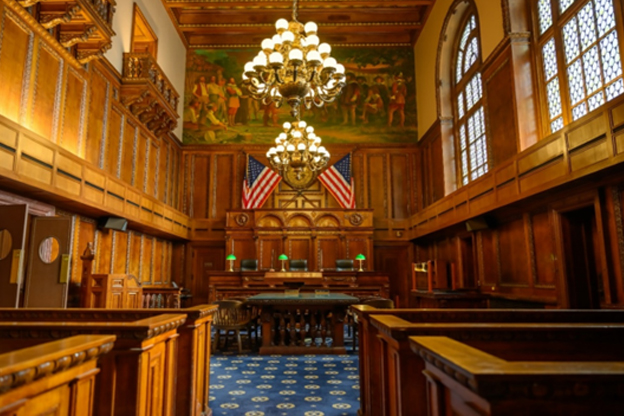 The magnificent main courtroom features three arched, leaded-glass windows and three balconies. The beautiful oak wood is carved and incomparable. This courtroom is arguably the most beautiful in the state of Ohio, if not the country.
The magnificent main courtroom features three arched, leaded-glass windows and three balconies. The beautiful oak wood is carved and incomparable. This courtroom is arguably the most beautiful in the state of Ohio, if not the country.
The main courtroom of the Eighth District Court of Appeals is where many cases have been argued that have impacted American jurisprudence to this day. The following cases were first heard in the main courtroom as the initial appellate court but, ultimately, they were all heard and decided by the Supreme Court of the United States and affect all of American criminal law.
Terry v. Ohio is the most significant case in modern American history involving searches and seizures and provides for “stop and frisk” procedures by police officers. Mapp v. Ohio, arguably the second most significant case in American criminal law history addressed unreasonable searches and seizures by law enforcement and established the exclusionary rule which prohibits the use by prosecutors of illegally obtained evidence. State v. Sheppard (the Sam Sheppard murder case) was ultimately reversed due to adverse media coverage and helped define, under the Fourteenth Amendment, what protections were necessary regarding adverse media coverage. Jacobellis v. Ohio is the case in which Justice Potter Stewart penned the words “hard core pornography . . . and I know it when I see it . . . .” At issue in this case was whether the State of Ohio could ban a motion picture considered by some to be obscene and whether the film was entitled to First Amendment protections. It was.
Remembering these cases and the legacy they bring to this beautiful place, the jurists here are reminded of the gravity of the duty weighing upon us. We are proud to serve the law and the State of Ohio.